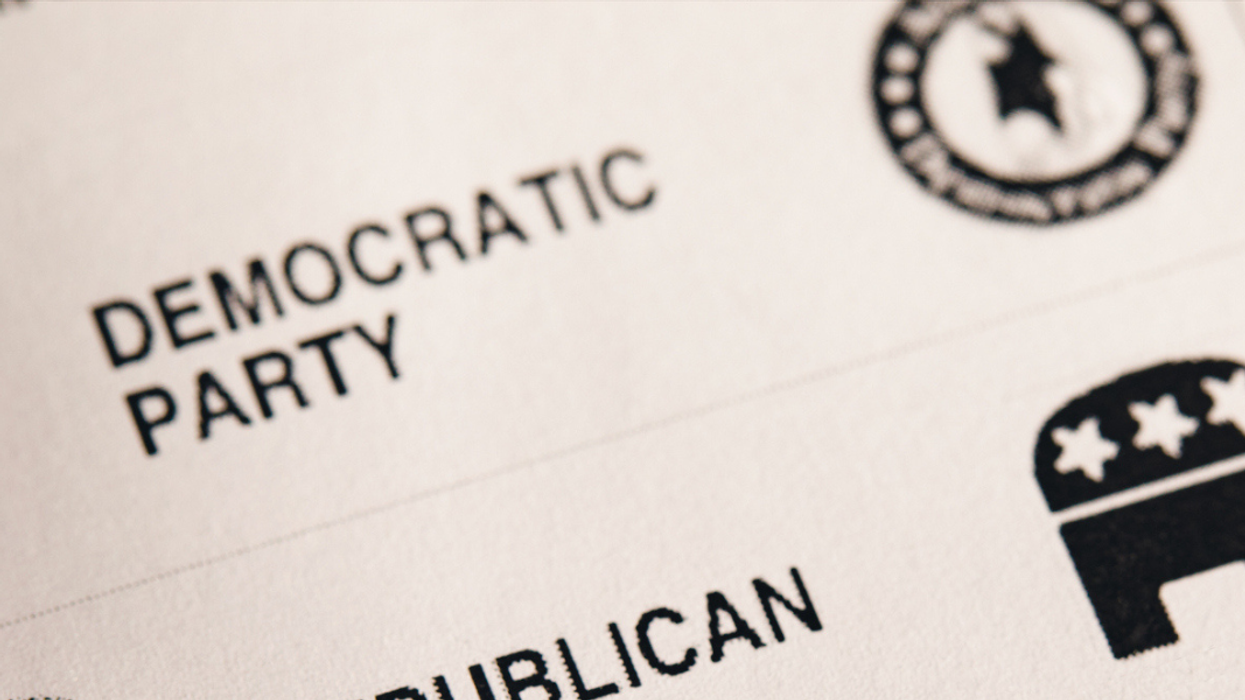Goldstone is the author of the forthcoming "Not White Enough: The Long Shameful Road to Japanese American Internment."
On a recent episode of Real Time with Bill Maher, former ten-term Ohio Democratic congressman Tim Ryan, who had recently lost a Senate race to best-selling author, financial executive, and Trump acolyte J. D. Vance, expounded on what has become the toxicity of the Democratic brand.
To make his point, Ryan related the story of fellow Democrat Jennifer Brunner and her bid to be chief justice of the Ohio Supreme Court. Brunner had been immensely popular, winning her seat on the court in 2020 by a half-million votes. In that year, however, judicial candidates ran with no party label printed on the ballot. After the election, the Republican-controlled state legislature decided not to let that happen again and passed a law requiring party affiliation. Although Brunner’s record was spotless and not at all radical, with the “D” next to her name, she lost in 2022 by a half-million votes. Being a Democrat had cost her one million votes.
While it would be easy to dismiss Ryan’s using the “D” next to his name as an excuse for being beaten by a better candidate who ran a better race, Vance was not and did not. In fact, Tim Ryan should have been a dream candidate for Democrats, running in a working-class state that was once a toss-up but now tilted Republican. Born in blue-collar Niles, a depressed steel town, Ryan was a star high school quarterback, went to Bowling Green University, and became the sort of Tip O’Neill Democrat that was once the backbone of the party. He was only 29 years old when he was first elected to Congress.
From the first, the cornerstone of Ryan’s congressional agenda was a reform of American trade policies to make them fairer to the working class. In 2010, he sponsored the Currency Reform for Fair Trade Act, which included punitive tariffs for nations such as China, which uses currency manipulation to make their products more attractive to foreign buyers.
In 2016, in what should have elicited applause across Ohio, he mounted a challenge to Nancy Pelosi, who was then running for House minority leader, contending Democrats needed new—and younger—blood in their leadership. He lost 134-63 but stunned progressives by getting that many votes. In 2020, he briefly ran for president after a GM plant in Lordstown shut down, costing Ohio three thousand jobs. His message, then and always, was that Democrats would fail if they ignored the working class.
But where Ryan remained true to his blue-collar roots, Vance had made a distinct pivot, a habit that became something of a trademark. He was raised in Middletown, joined the Marines, served in Iraq as a journalist, then enrolled in the Ohio State University, after which he attended Yale Law School. He moved to San Francisco, working for far-right venture capitalist Peter Thiel. In 2016, he published Hillbilly Elegy, a controversial memoir that described the economic and social decline in Appalachia.
He thought about challenging Sherrod Brown in the 2018 Ohio Senate race, but Brown seemed too formidable. Instead, in 2022, backed by Thiel and other archconservatives such as Robert Mercer, Vance decided to make a run at Rob Portman’s soon to be vacant Senate seat. The only problem was that Vance was on record as saying some not very complimentary things about Donald Trump. In 2016, he had called Trump “reprehensible,” “a fraud,” and an “idiot,” comparing Trumpism to opioid addiction.
There was no way he could win a primary battle, let alone a general election, with those credentials so, pivoting once more, Vance gushed that Trump was the “greatest president of my lifetime.” Trump reacted to the obligatory fawning by calling Vance an ass-kisser, to which Vance responded by ratcheting up his ass-kissing. Eventually, he received Trump’s full-throated support.
Vance was often all over the place on policy. He spun his views on Ukraine so often that both he and Ohio voters must have gotten vertigo, eventually telling Steve Bannon, “I gotta be honest with you, Steve, I don’t really care what happens to Ukraine. When I wake up in the morning, I worry about whether my five-year-old son is going to interact with a sex trafficker.” This from a man with enough money to send his son to the most exclusive private school in whatever state he happens to be living in at the time.
As with many of those Trump forced on the party, Vance proved to be a weak, not terribly engaged campaigner, so much so that with polls showing a neck-in-neck race, Republicans were forced to pour $30 million into Ohio to prevent an enormous upset, which could conceivably have cost them control of the Senate. With victory seemingly within his grasp, Ryan asked for similar help from the Democratic leadership.
They turned him down.
The Senate Majority PAC, Democrats’ main source of outside spending, refused to invest in Ohio, leaving Vance with a $40 million to $4.5 million spending gap. And their reason? As Ryan said in an interview, “There are strategist types in the highest level of the party saying there are not enough college graduates in Ohio to invest in my campaign.” The party preferred to put their money into North Carolina, where the chances of winning were lower but the number of college graduates greater.
Ohio voters noticed. Christopher Gibbs, a farmer from deep red Shelby County, who had switched his registration from Republican to Democrat, wrote on Twitter, “I joined this party because I hoped to be able to lend a hand in rebuilding credibility in rural areas from the ground up. On second thought, it looks like we better take aim at the topline elite first.”
There has been a good deal of breast-beating among Democrats, lamenting their losses among traditional supporters. President Biden even specifically proposed a “blue-collar blueprint to rebuild America” in his State of the Union address.
Still, as is often the case in politics—and everywhere else for the matter—most Democrats blame not themselves for their unpopularity, but rather the “other guy,” in this case devious, dishonest, amoral Republicans.
But how can you expect to garner votes from people to whom you show open contempt? In 1969, then-vice president Spiro Agnew called the liberal media an “effete corps of impudent snobs,” (not effeminate, as some later suggested.) Now, more than a half century later, Democratic leaders may want to consider whether Agnew had a point.



















